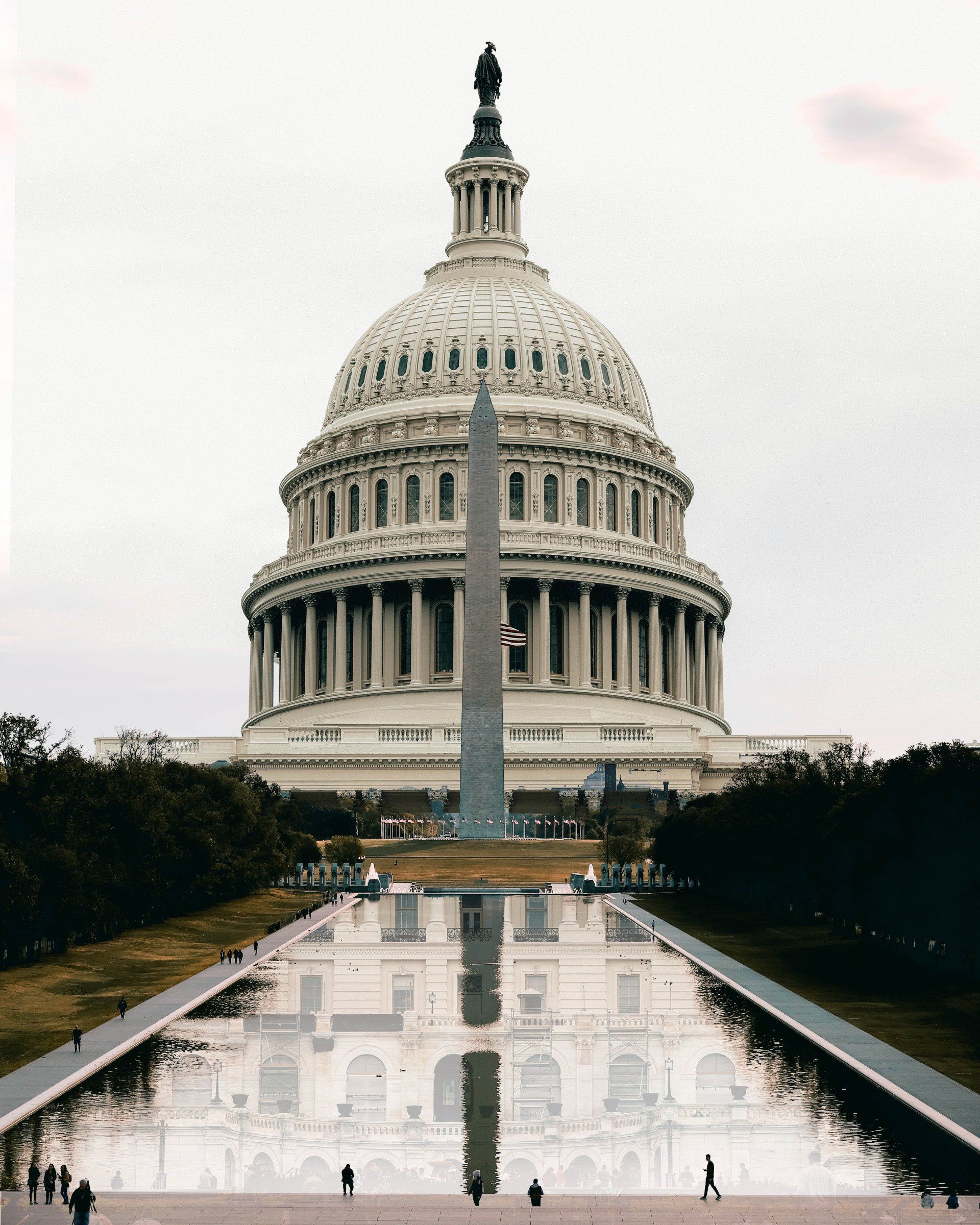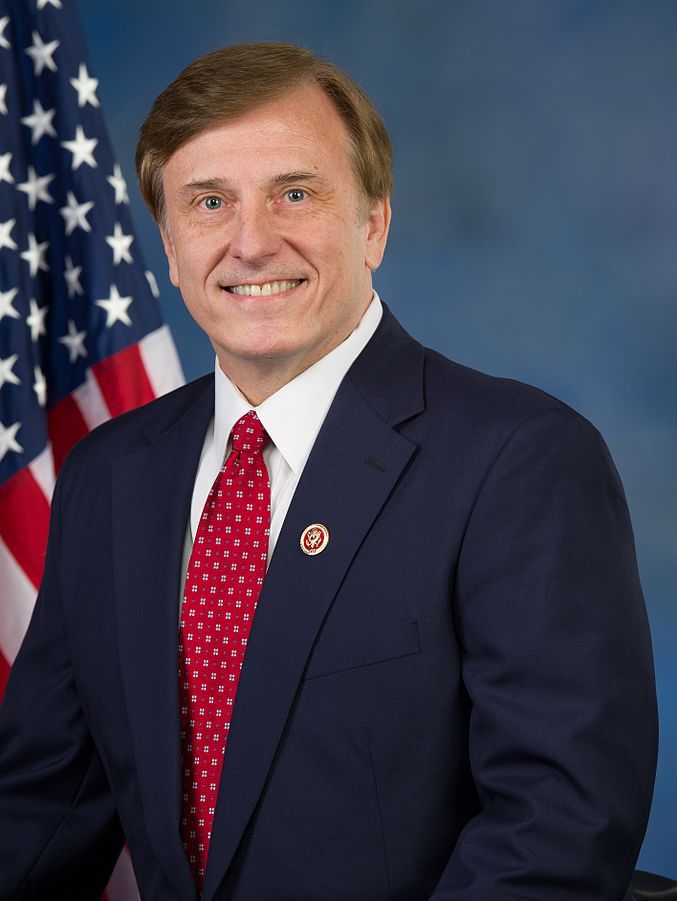RESPONSIVE • RELIABLE • RESULTS
OUR TEAM
LATEST NEWS

The last session of the U.S. Congress witnessed an unusual number of funding techniques designed to appropriate money for federal agencies and programs well beyond the typical one-year allocations. Whether this phenomenon resulted from Democratic priorities in both the House and Senate remains to be seen. It is also unclear if it will continue under Republican House control during the 1st Session of the 118th Congress. Most professionals and groups, both foreign and domestic, targeting U.S. Congressional funding actions, avoid reviewing multi-year allocations and often do not take into consideration the benefits that federal agencies gain from making programmatic or political funding decisions based on large sums of future money in their budgets. One bill that passed Congress and was signed into public law, the "Infrastructure Investment and Jobs Appropriations Act," allocated over $197 billion in advanced funding for federal agencies from Fiscal Year (FY) 23-26, providing money for three future fiscal years. The Department of the Interior, for example, was allotted over $1.6 billion each FY from 2024, 2025, and 2026 for "water and related resources," which will have an immense impact on department staff who will have these funds available for dispensing in addition to their annual appropriations budget requests to Congress for these future years. Advanced Appropriations One key technique used effectively in legislation by both the House and the Senate last year was called "Advanced Appropriations." Congress passed bills that included funding not just for the fiscal year being considered, but also for longer periods, in some cases up to five years into the future. The following are examples of selected future funding provisions found within the "Consolidated Appropriations Act": • For the Department of Transportation, Federal Aviation Administration, airports, and terminal facilities, funds were allocated from FY24 to 27, the latter being available by the FAA until September 30, 2027. • For the Department of Justice, state and local law enforcement and crime prevention programs, one major category was a "Safer Communities program," funded with a total of $1.6 billion from FY23 to FY26. • For the Department of Housing and Urban Development's "Homeless Assistance Grants," the bill funded $3.6 billion "...to remain available until September 30th, 2026." • The most extreme example of multi-year funding in this bill provided the Department of Agriculture with $100 million "...to remain available until September 30, 2031, for administrative costs." This funding extends eight fiscal years into the future. The following multi-year funding techniques appeared last year in other than appropriations legislation: • Public Law 117-167, which included the "CHIPs Act," provided funding for a robust and domestic semiconductor manufacturing initiative. It granted $31 billion to the Department of Commerce for FY22 and 23, extending to $46.3 billion in FY24, $6.1 billion in FY25, and $6.8 billion in FY26. These funds would be in addition to other budget requests made in these future years. In the same bill, the Department of Defense received $400 million for FY23, as well as an additional yearly $400 million for FY24, 25, 26, and 27, granting $1.6 billion over these four future fiscal years to be used by the Secretary of Defense at his discretion. The funds could be "...merged with accounts in the DoD," with the only prohibition being that they could not be used for "...construction of facilities." In the same provision, the Department of State received $100 million for each year from FY 24-27, and the National Science Foundation received $50 million for the same period, allocating an additional sum of over $600 million for four fiscal years into the future. In Public Law 117-169, the “Inflation Reduction Act,” Section 30001 of a comprehensive bill provided the Department of Defense with $500 million for the implementation of the Defense Production Act (DPA), "...to remain available until September 30, 2024." This allocation, consisting of a single sentence without any restrictions or additional information, is not related to any other subject matter in the bill. It also represents a future allocation for one additional fiscal year beyond the DPA funding in the DoD FY23 appropriations legislation, which falls within the $600 million range. There are other multi-year funding techniques that professionals and those seeking to influence Congress and the U.S. government in their budget considerations should be aware of and incorporate into their strategy and tactics. For example, when finalizing their annual defense-related funding requests to Congress, most requests included in the detailed budget justification materials fall into "Program Elements" (PEs) with specific line-item numbers and categories within the Services at the Defense-Wide (DW) level, extending over five fiscal years. Therefore, for planning and presentation purposes, recent documents include targeted funding through FY2027. While these are authorizations and not appropriations funding requests, they significantly impact the final DoD Appropriations bill from the House and Senate. It remains to be seen if these multi-year funding allocations will be included in the Fiscal Year 2024 final appropriations bills during this Session of Congress. They are a critical part of the funding decision-making cycle and can play a significant role in determining the final outcome of funds allocated to programmatic or policy initiatives.

The next 120 days, from September until the end of December, create a PERFECT STORM for a variety of critical decisions by the U.S. Congress and government. It impacts all who seek to influence outcomes and to understand complex funding allocations, details in the policy process, and how to maneuver in the last days of the 117 th Congress. Over 22% of the US House Members, and all their staffs, will not be in office after the end of this year. The same is true for many Senate offices and Members as well. What actions should one consider in a “lame duck” Congress after the November 8 th National elections? How does one identify and influence unprecedented federal government actions and major regulatory agendas? Achieving success in this PERFECT STORM requires those that can navigate and avoid negative outcomes, with consideration for: The start of the next Fiscal Year (FY) 2023 on October 1 st , with decisions yet to be made on all appropriations legislation. The spending priorities for FY22-31, creating a new phenomenon called “advanced appropriations”, impacting future agency funding levels. The Impact of the November 8 th elections which will create a new majority in the US House, and possibly in the US Senate, which will influence new directions for 2023-2024. The final decisions on the next cycle of Administration proposed funding and policy initiatives for FY 2024 to be presented to the next 118 th Congress. Advanced Appropriations over many Fiscal Years : One of the key take-aways from recent Congressional passage of massive, multi-Trillion-dollar legislation, which spans over multiple Fiscal Years, has been a relatively new funding technique called “advanced appropriations.” The majority in both the U.S. House and Senate, have disregarded the established practice of annual appropriations bills for agency programs and have resorted to funding programs over a multi-fiscal year basis. Several examples are as follows: Public Law 117-169, “Inflation Reduction Act,” August 16, 2022, allocates funding over a ten fiscal year basis. Examples within this act include; $250M funding for the National Park Service over 10 years ($2.5B). The US Postal Service receives a total of $1.29B, over 10 years from for the purchase of zero-emission vehicles and an additional $1.71B for infrastructure. Public Law 117-167, “CHIPs Act,” August 2,2022 (Section 102) appropriates $52B over five years for the Department of Commerce and $2B on semiconductor chip manufacturing for the Defense Department over a 5-year period. These funding appropriations provides an agency or program with huge allocations, giving tremendous authority and decision-making ability to federal officials to determining the rules for who secures the funds and how they are dispensed. For example, Long-range projections of funding within the Pentagon might include details over a five-year period. This multi- year effort creates new targeting for agency official presentations, requests over a longer period, and strategies to meet these new demands. A new Fiscal Year begins October 1st: This Congress ends on December 31 st , 2022, and the new 118 th Congress begins in January. All bills not passed by the end of this year “die.” Therefore, bills providing for the over $1.2T federal budget have pending legislation in the Congress. If not passed by October 1 st , to avoid a “shutdown” of the federal government, Congress passes what is called a “continuing resolution” (CR). This CR funds the government at the rate last approved by Congress for each agency (this would be at FY2022 levels). It is possible that the political nature of the divided Congress may delay funding past October 1 st . Last year, a “Consolidated Appropriations Act,” was signed into law on March 15, 2022, 165 days after the funding was to begin. These funding decisions have impacts that merit consideration in these 120 day period: Critical changes in federal policy directives inserted in legislation by Congress or line-item allocations for specific programs can be tremendously impacted if delayed. These decisions are made away from the floor of the House and Senate by a joint conference committee of leadership and professional staff. Many of these specific funding items impact national defense programs within the DoD. Changes that will occur after the November 8 th national elections in the funding committee leadership, especially chairs of Committees and subcommittees with their professional staffs, are critical to outcomes. This is true both in the final stages of this Congress, but more so for developing policy and funding for the next one. Keeping one eye on the elections for Congress can be a crucial decision in the next 120 days. Aside from the “advanced appropriations” programs, during this FY transition, some key targets for presentation include officials at the Office of Management and Budget (OMB). OMB is considered the key group that advises the White House on agency budget decisions, as well as proposed budget impacts. Also, consideration in the next cycle for FY24 is crucial. Final OMB and White House decisions on that budget are to be made after Thanksgiving and prior to Christmas for presentation to the Congress after the State of the Union in early 2023. The next 120 days includes many other critical deadlines and decision-making events in government relations for impacting the U.S. Congress and Federal agencies. Some of these to consider are as follows: The NDAA: Resolution of the final National Defense Authorization Act (NDAA) for FY2023, which passed the House and has been “filed” in the Senate. The NDAA in the Senate has seen 900+ amendments for consideration by the leadership and there will be a final Conference Committee between the House and Senate Armed Services Committees prior to sending it to the White House. This is a major pending bill of an $800B+ magnitude which is a must pass effort this year. Laws that are expiring: There is a host of laws that will expire within the next 120 days, and many of these are quite important to various programs and constituencies. An example is the National Flood Insurance Program (NFIP) which expires September 30, 2022. Most of these provisions will probably be “kicked down the road” so to speak into the 118 th Congress for final resolution. Regulations by each federal agency: With a host of bills signed into law with key provisions requiring agency regulations for implementing the program, grant, or policy, it is anticipated that the agency regulatory processes will be working overtime at the end of the year and into the 1 st Quarter of 2023. These regulations for once a bill is signed into law are being drafted and reviewed within the agency and influencers are working to project their requirements into the final rule that will be published in the Federal Register for public comment. Many of the FY22-23 decisions referenced above will also have a major impact at the state level once funding is allocated either by formula or directly by the highest agency official.

As we look forward to November and the midterm elections, one topic seems to be on the minds of all Americans, inflation. For Americans, inflation is different than any other political issue. That is due chiefly to the fact that it is felt on a personal level. It is felt when you go to put gas in your car. It is felt when you are trying to put food on the table. It is felt when you must live with the constant insecurity of whether an unexpected expense will drive you into debt. Inflation is the definition of a “kitchen table” issue. It is hard to be concerned about secondary issues like climate change or partisan talking points when you are living paycheck to paycheck. With this being the case, Congress and the Administration need to be making every effort to tamp down inflation and provide Americans with the peace of mind that things will get better soon. However, the efforts currently being made by the Administration and the majority in Congress consistently fall short and, in some cases, only exacerbate the problem. Take the “Inflation Reduction Act” for example. Despite the appealing name, economists have determined the $739 Billion bill will do nothing to reduce near-term inflation. In fact, University of Pennsylvania economists behind the Penn Wharton Budget Model state the legislation’s likely impact on inflation is "statistically indistinguishable from zero." The Congressional Budget Office has also reviewed the bill and concluded it would have a "negligible" impact on inflation over the next two years. With these facts being what they are, can we really call this bill the “Inflation Reduction Act”? If the “Inflation Reduction Act” does not reduce inflation, then what does it do? What are the key policies this act will implement? For the most part, the bill covers climate issues, health care, green energy, and tax enforcement. One must ask the obvious question; are these really the issues Americans are worried about during record high inflation rates? The bill will also raise taxes on American families, manufacturers, and energy producers. These measures do nothing to relieve the struggles of everyday Americans and may work only to exacerbate them. However, perhaps the most concerning provision in the bill is the addition of 87,000 new IRS agents. The administration claims these additional agents will be used to ensure rich corporations and individuals “pay their fair share”. However, I have seen first-hand that this is simply not the case. During my first 8 years in Congress, the Clinton administration also expanded the IRS. I saw many of my constituents impacted by the aggressive nature of this expanded IRS, many of whom were average middle-class families. I am deeply concerned that history will repeat itself and this IRS hiring binge will see middle-class families targeted at a time when they are already struggling economically. Congress needs to put forward real solutions to fight inflation and ease the burden that the citizens of this country are feeling each and every day. How can we expect the American people to support the “world-changing” policies outlined in this bill when they are struggling to afford the bare necessities of life?













